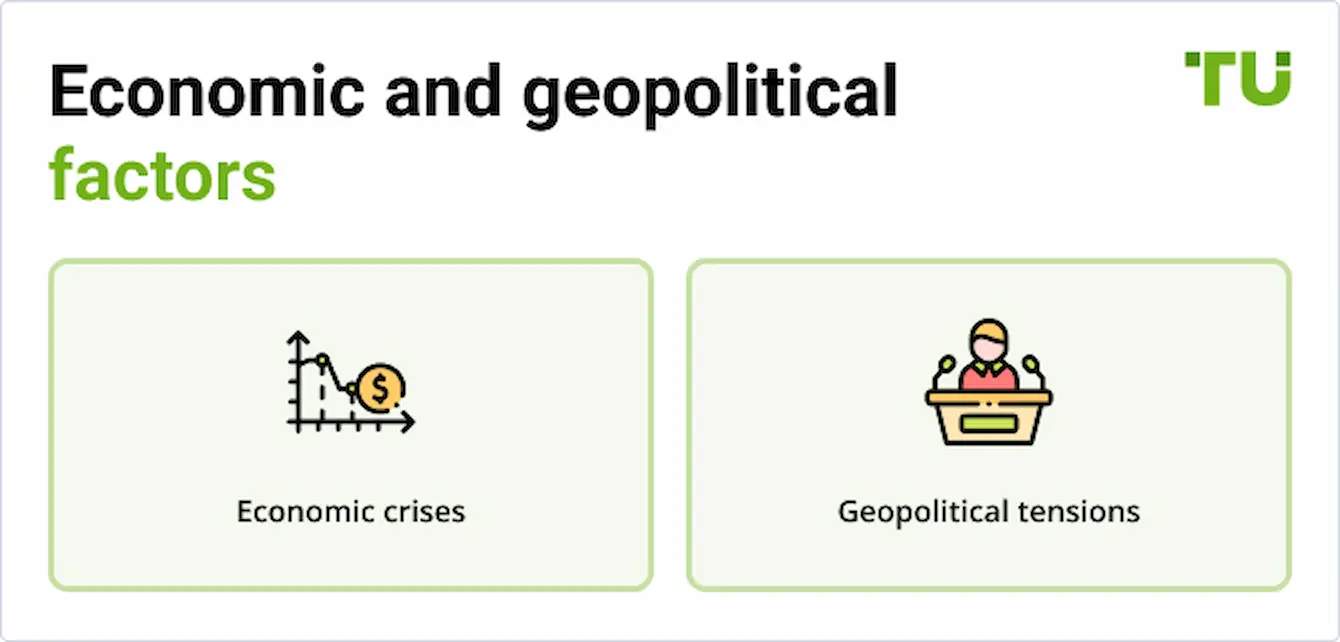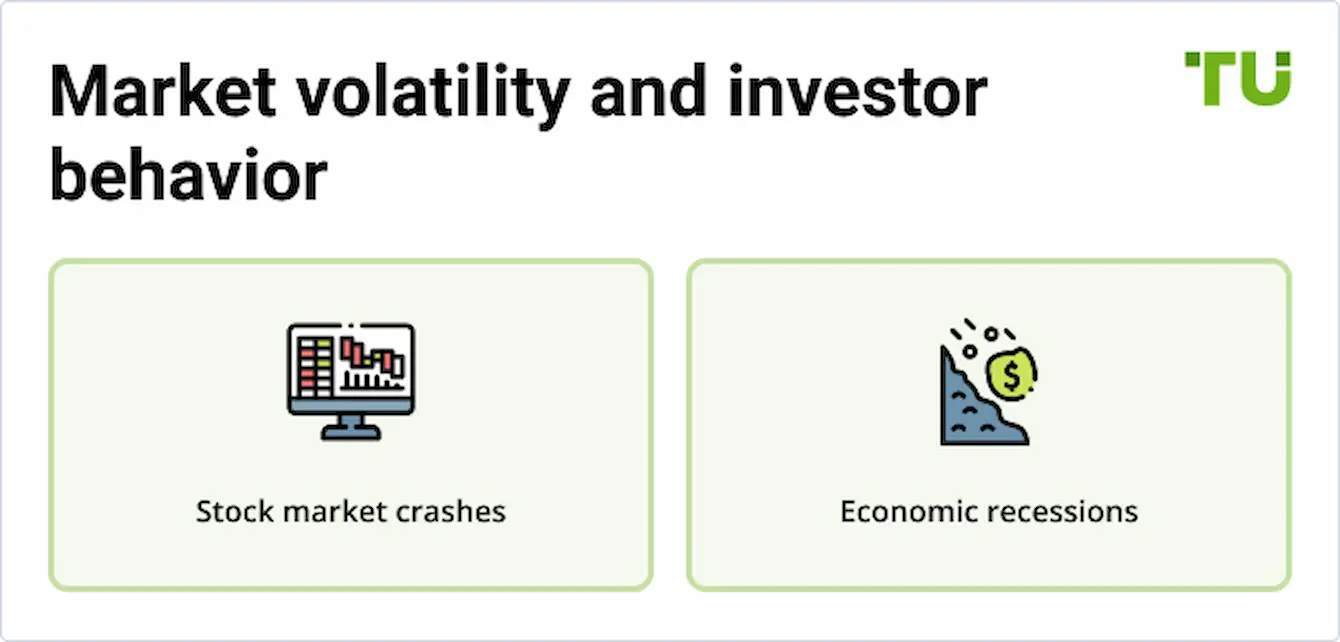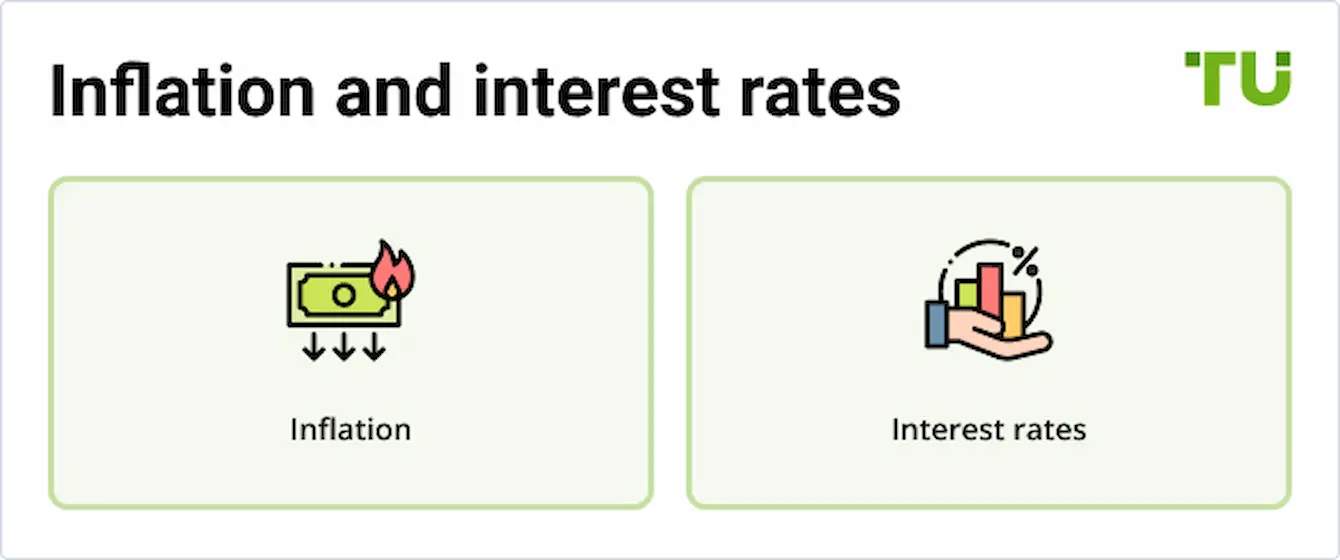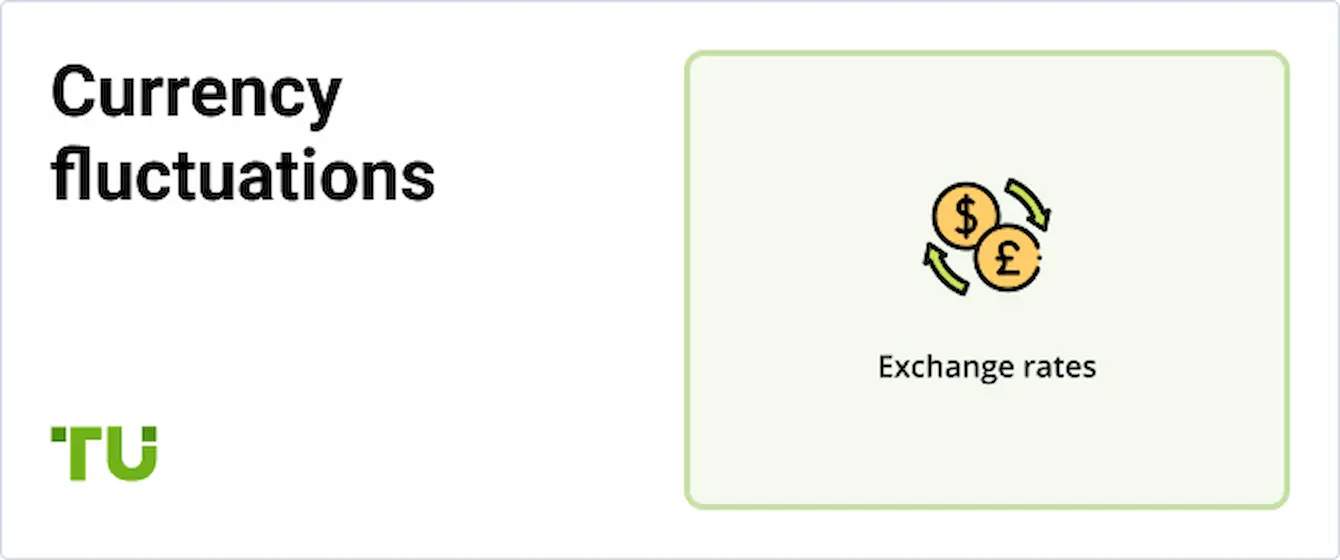Why Do Gold Prices Increase? Traders Union Analyzes



Editorial Note: While we adhere to strict Editorial Integrity, this post may contain references to products from our partners. Here's an explanation for How We Make Money. None of the data and information on this webpage constitutes investment advice according to our Disclaimer.
Gold is considered a resilient investment. When interest rates fall, gold prices tend to rise, as bullion becomes more appealing than income-paying assets like bonds.
Now the gold market has experienced significant fluctuations, catching the attention of both beginner and advanced traders. According to the World Gold Council, cumulative net gold purchases by global central banks for their foreign exchange reserves in 2023 totaled about 1,037 tons, making 2023 the second consecutive year of purchases above 1,000 tons. So the trend of gold hoarding continues steadily, despite the volatility of world markets and economic uncertainty. We explore why gold price increase, explain the factors influencing gold prices, the best times to buy, and gold forecasts for the future.
Factors affecting gold prices
What affects gold prices?
Strong economic conditions often lead to lower gold prices as investors move their funds to higher-yielding assets. Conversely, during economic downturns, gold prices tend to rise
Political events can also influence gold prices. Political instability or uncertainty can drive prices higher
Market trends play a crucial role in determining gold prices
Let's describe in details, why gold price increase or decrease.
1. Economic and geopolitical factors
Gold prices are highly sensitive to global economic instability and geopolitical tensions. During periods of economic crisis, such as the 2008 financial crash or the COVID-19 pandemic, gold prices tend to surge as investors seek safe-haven assets.
Economic crises
Economic downturns often lead to increased demand for gold. For instance, during the 2008 financial crisis, gold prices rose significantly as investors lost confidence in traditional financial markets and sought the stability of precious metals.
Geopolitical tensions
Geopolitical conflicts, such as the Russia-Ukraine war and tensions in the Middle East, also drive up gold prices. These events create uncertainty in global markets, prompting investors to move their assets into gold.

2. Market volatility and investor behavior
Investors often turn to gold during periods of high market uncertainty, viewing it as a stable store of value, and it is stable and highly liquid.
Stock market crashes
During stock market crashes, such as the 2008 financial crisis or the 2020 COVID-19 pandemic, gold prices typically rise as investors seek safer assets.
Economic recessions
When economic indicators are weak, investors tend to move their funds from riskier assets like stocks to safer assets like gold.

3. Inflation and interest rates
Does inflation affect gold prices? Of course. Inflation and interest rates have a profound impact on gold prices.
Inflation
When inflation rises, the value of fiat currencies falls, leading investors to buy gold to preserve their wealth. Historical data shows that during periods of high inflation, gold prices tend to rise.
Interest rates
When interest rates are low, the opportunity cost of holding gold decreases, making it more attractive.

4. Currency fluctuations
A weaker dollar makes gold cheaper for investors holding other currencies, increasing demand and driving up prices. Conversely, a strong dollar can suppress gold prices.
Exchange rates
Exchange rates between different currencies can also impact gold prices. For instance, when the Euro strengthens against the dollar, gold becomes more affordable for European investors, increasing demand.

Changes in the gold prices over different periods
We offer a table with a comprehensive overview of how various factors influence gold prices across different periods, including economic crises, geopolitical tensions, inflation, interest rates, and currency fluctuations.
| Period | Year(s) | Context | Investor Behavior | Impact on Gold Prices |
|---|---|---|---|---|
1970s Inflation | 1970-1980 | High inflation in the US | Shift to gold as a hedge against inflation | Significant increase |
Early 2000s Dollar Weakness | 2000-2005 | US dollar weakened due to economic policies and trade deficits | Increased demand for gold as it became cheaper for foreign investors | Significant increase |
2008 Financial Crisis | 2008-2009 | Economic instability and fluctuating US dollar | Flight to safety, increased gold purchases | Significant increase |
Post-2008 Financial Crisis | 2008-2015 | Low interest rates following the financial crisis | Increased demand for gold due to low opportunity cost | Sustained increase |
Eurozone Crisi | 2010-2012 | Economic instability in the Eurozone and fluctuating Euro | Increased demand for gold from European investors | Sustained increase |
Crimea Annexation by Russia | 2014 | Geopolitical tensions and sanctions against Russia | Increased safe-haven buying due to geopolitical risks | Spike in prices |
Post-Brexit Referendum | 2016 | British pound weakened significantly against the dollar | Increased gold purchases as a hedge against currency devaluation | Short-term increase |
COVID-19 Pandemic | 2020-2021 | Global economic uncertainty, low interest rates, and weak USD | Massive shift to gold as a hedge against potential inflation | All-time high |
Federal Reserve Rate Hikes | 2022-2023 | Rising interest rates as the Federal Reserve combats inflation | Decreased demand for gold as opportunity cost increases | Moderate decrease |
Russia-Ukraine War | 2022 | Geopolitical tensions and global economic repercussions | Increased safe-haven buying due to geopolitical tensions | Sharp increase |
Current Inflation Trends | 2023-Present | Persistent inflation concerns despite recent rate hikes | Continued interest in gold as an inflation hedge, with cautious optimism | Fluctuating but generally upward trend |
Optimal timing for buying gold
The gold buying timing can significantly impact investment returns. By understanding the seasonal and cyclical patterns in gold prices, investors can make more informed decisions.
Gold price increase or decrease?
Analyzing recent trends and historical data provides insights into whether gold prices are likely to increase or decrease.
Central bank policies
Central banks' actions, such as adjusting interest rates or purchasing large amounts of gold, can significantly influence gold prices.
Economic data and geopolitical events
Economic indicators, such as GDP growth, inflation rates, and employment data, along with geopolitical events like wars or trade tensions, also impact gold prices.
Gold price forecasts for 2024
Experts predict that gold prices in 2024 will continue to be influenced by economic policies, particularly those related to interest rates and monetary easing. J.P. Morgan forecasts that if economic growth slows down and central banks keep interest rates low, gold prices could reach around $2,100 per ounce by the end of 2024.
Gold long-term forecast
Environmental regulations and the impact of climate change can also influence gold prices. Stricter environmental regulations can increase the cost of gold mining, thereby reducing supply and pushing up prices.
Long-term economic trends
Long-term economic trends, such as global economic growth, inflation rates, and currency fluctuations, play a significant role in determining gold prices.
| Trading platform | Accounts | Instruments | Gold | Leverage | Min. deposit, $ | Open account | |
|---|---|---|---|---|---|---|---|
| Mobile, Web, Desktop | Demo, User | 0.00 | Yes | Up to 1:30 or up to 1:300 | 100 | Open an account Your capital is at risk. |
|
| MT4, MobileTrading, WebTrader, cTrader, MT5, TradingView | Razor, Standard | 0.00 | Yes | Up to $400:1 retail, 500:1 Pro | No | Open an account Your capital is at risk.
|
|
| WebTrader, MetaTrader4, Mobile platforms, MetaTrader5 | Standard, Core, Swap-free, Premium, Premium Core | 0.00 | Yes | Up to 1:200 | No | Open an account Your capital is at risk. |
|
| FOREX.com, MT4, MT5 | Standard account, Commission account, Direct Market Access account (DMA) | 0.00 | Yes | Up to 1:400 | 100 | Study review | |
| Trader Workstation, IBKR Mobile, APIs | Real, Demo | 0.00 | Yes | Depending on the asset | No | Open an account Your capital is at risk. |
|
| MetaTrader4, API, ProRealTime, IG Trading Platform | Demo and CFD | 0.00 | Yes | Up to 1:200 | 1 | Study review |
Risks in gold investment
Investing in gold, like any other investment, comes with its own set of risks. Understanding these risks and taking appropriate measures can help mitigate potential losses.
| Risk Category | Likelihood | Impact | Description | Mitigation Measures |
|---|---|---|---|---|
Market Volatility | High | High | Gold prices are highly volatile, influenced by economic data, geopolitical events, and market speculation | Consider gold as a long-term investment. Diversify investments to mitigate the impact of volatility |
Storage and Insurance Costs | Medium | Medium | Physical gold requires secure storage and insurance, adding to the overall cost of investment, which can reduce returns | Consider investing in digital gold or gold ETFs. Include storage and insurance costs in the overall investment plan |
Liquidity Risks | Medium | High | While gold is generally considered a liquid asset, there can be times when selling quickly is challenging without significant loss | Maintain a balanced portfolio to ensure liquidity.Avoid over-investing in gold. Monitor market conditions and plan sales strategically |
Regulatory Risks | Low | Medium | Changes in government policies and regulations, including import duties, taxes, and trade restrictions, can impact the gold market's supply | Stay updated on regulatory developments in major gold-consuming countries. Consider the potential impact of regulatory changes on gold investmen |
Gold is always relevant: expert opinion
Investing in gold while it is rising in price requires a strategic and thoughtful approach. I emphasize the importance of not being swayed solely by current market trends. It's crucial to assess the long-term potential rather than making decisions based solely on short-term gains.
Pay attention to the form of gold investment. Physical gold, such as coins and bars, can offer tangible value but comes with storage and insurance considerations.
Alternatively, gold ETFs, mutual funds, and mining stocks provide exposure to gold without the need for physical possession, often with lower transaction costs and greater liquidity.
By following these guidelines, you can strategically invest in gold even as prices rise.
Conclusion
Investing in gold can provide a hedge against economic instability and market volatility, but it requires careful consideration of various factors and potential risks. Gold prices are influenced by a wide range of factors, from economic policies and geopolitical tensions to technological advancements and environmental issues.
Additionally, understanding why gold price increase or decrease and mitigating risks associated with gold investment can help protect and enhance returns. Whether considering short-term forecasts for 2024 or long-term trends over the next decade, it is crucial to stay informed about the various elements that drive gold prices.
FAQs
What are the key factors affecting gold prices?
Gold prices are influenced by various specific factors. Economic data, such as GDP growth, unemployment rates, and inflation levels, can affect investor sentiment towards gold. Geopolitical instability, wars, and trade conflicts, often drive investors to seek the safety of gold.
When is the best time to buy gold?
The best time to buy gold is typically during periods of economic downturns or recessions when gold prices often rise as it is seen as a safe-haven asset. Low-interest environments decrease the opportunity cost of holding gold, making it a more attractive investment.
Why gold rate is increasing recently?
Post-pandemic economic uncertainties and potential recessions drive investors to gold. Rising inflation rates, ongoing conflicts and political instability in various regions have heightened gold's appeal. All these factors are the answer to the question why gold price increase now.
Does inflation affect gold prices?
Yes, inflation significantly affects gold prices. Gold is traditionally seen as a hedge against inflation, maintaining its value as currency purchasing power declines. During periods of high inflation, investors buy more gold to protect their wealth, driving up prices. Inflation often impacts gold prices positively.
Related Articles
Team that worked on the article
Chinmay Soni is a financial analyst with more than 5 years of experience in working with stocks, Forex, derivatives, and other assets. As a founder of a boutique research firm and an active researcher, he covers various industries and fields, providing insights backed by statistical data. He is also an educator in the field of finance and technology.
As an author for Traders Union, he contributes his deep analytical insights on various topics, taking into account various aspects.

Dr. BJ Johnson is a PhD in English Language and an editor with over 15 years of experience. He earned his degree in English Language in the U.S and the UK. In 2020, Dr. Johnson joined the Traders Union team. Since then, he has created over 100 exclusive articles and edited over 300 articles of other authors.
Mirjan Hipolito is a journalist and news editor at Traders Union. She is an expert crypto writer with five years of experience in the financial markets. Her specialties are daily market news, price predictions, and Initial Coin Offerings (ICO).
Forex leverage is a tool enabling traders to control larger positions with a relatively small amount of capital, amplifying potential profits and losses based on the chosen leverage ratio.
The idea behind mitigation is to recognize and effectively trade mitigation blocks. These blocks consist of specific price action patterns that signal a change in market sentiment or demand-supply dynamics.
Cryptocurrency is a type of digital or virtual currency that relies on cryptography for security. Unlike traditional currencies issued by governments (fiat currencies), cryptocurrencies operate on decentralized networks, typically based on blockchain technology.
Economic indicators — a tool of fundamental analysis that allows to assess the state of an economic entity or the economy as a whole, as well as to make a forecast. These include: GDP, discount rates, inflation data, unemployment statistics, industrial production data, consumer price indices, etc.
Uptrend is a market condition in which prices are generally rising. Uptrends can be identified by using moving averages, trendlines, and support and resistance levels.






























































































































